Lawns, especially in urban areas, are excellent pantries for both insects and small animals. Some of these pests do not cause any damage to your lawn and are even beneficial, while others can become a real nightmare for homeowners.
By identifying the pest, you will be able to apply the right treatment and make the necessary corrections to make your lawn dense and healthy again.
Yellow or brown patches, increased presence of birds, skunks or raccoons, grass that lifts up when pulled or does not green up after rain… all these are good reasons to investigate further before the damage is too great.
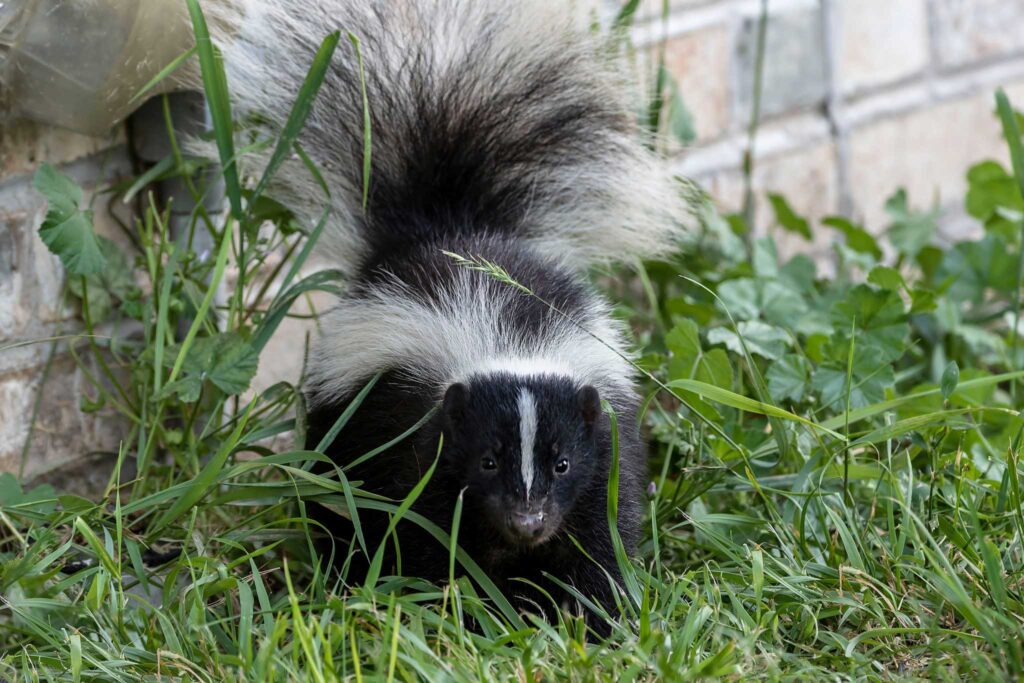
Why do insects come to your home?
Hairy chinch bugs, meadow moths, crane flies, grubs, cutworms and more, no one likes to see insects ravaging their garden. When the damage is not caused by the larvae, it is caused by the adults or small animals that come to feed on them leaving your lawn in a mess. Insects most often attack sparse and unhealthy lawns. In order to hatch, the eggs must touch the ground, so it is important to have a good density to avoid infestations. A healthy lawn is also more resistant to various stresses such as drought or weeds.
Do you want to improve the health of your lawn? Don’t hesitate to contact your Nutrite Expert.
To prevent infestations, improve your cultural practices
It’s really the quality of your lawn that will help you fight pest infestations. To strengthen your lawn so that it is more resilient, you need to give it the right care:
- Increase the mowing height to 8 cm.
- Fertilize properly at different times of the year.
- Aerate the lawn to loosen the soil if necessary.
- Topdressing to improve the quality of your soil.
- Overseed to densify the lawn
- Repair all damaged surfaces promptly.
It is possible that despite all the care given to your lawn, some insects manage to take up residence in your home. Pay attention to the changes you see on your lawn and act quickly to limit the damage. Team up with your Nutrite Expert for a beautiful, healthy and long-lasting lawn.
The main insect pests of lawns
Many insects and animals can cause damage to your lawn. In order to apply the right treatment or to control the infestation by correcting the problems, it is essential to identify the insect.
White grubs
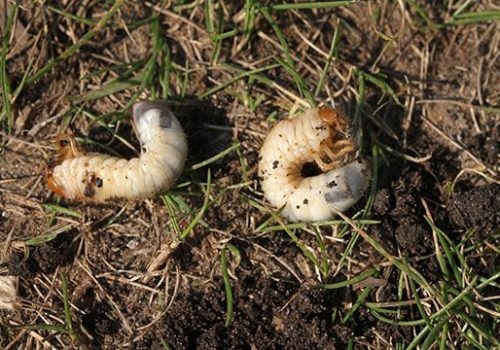
Grubs are the larvae of various beetles including the common chafer, the European chafer and the Japanese beetle. Feeding on the grass root, they can completely devastate a lawn in a short period of time. Damage is visible in the spring when the larvae surface to feed or in the fall when the new larvae have just hatched. Control is effective if treatment is done at the right time.
Chinch bugs
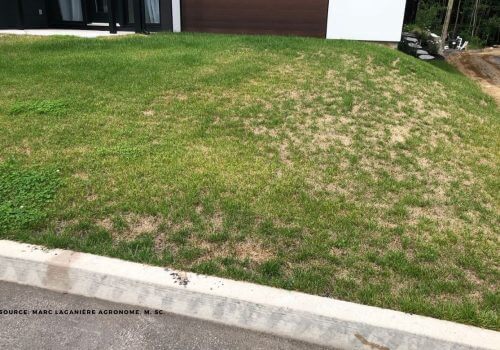
The chinch bug or hairy bug occurs during the summer months and attacks mainly turf in full sun. The red nymphs and black adults bite into the grass strands to feed on the sap. Yellow patches, which can easily be mistaken for signs of drought, appear in hot weather. This can be controlled with an insecticidal soap which should be applied promptly to prevent the bugs from spreading too far.
Sod webworm
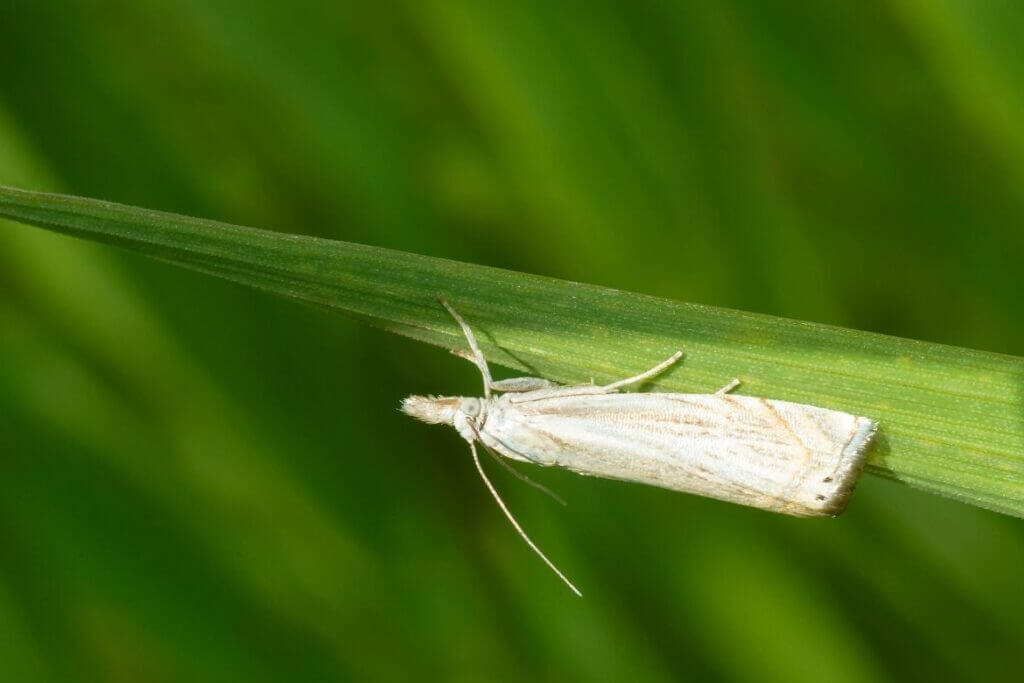
The adult sod webworm is a small white-beige butterfly that flies on the surface of the lawn. The adult does not cause any damage to the lawn, but the larva does. So if you have a lot of pretty butterflies flying over your lawn at dusk, it’s quite possible that you have a moth infestation. They can cause significant damage in a short period of time. Because the larvae are on the surface of the lawn and feed on the aerial part, the damage is more easily repaired than with other pests. Treatment should be applied at the first sign of damage and the lawn should be repaired promptly.
Crane fly
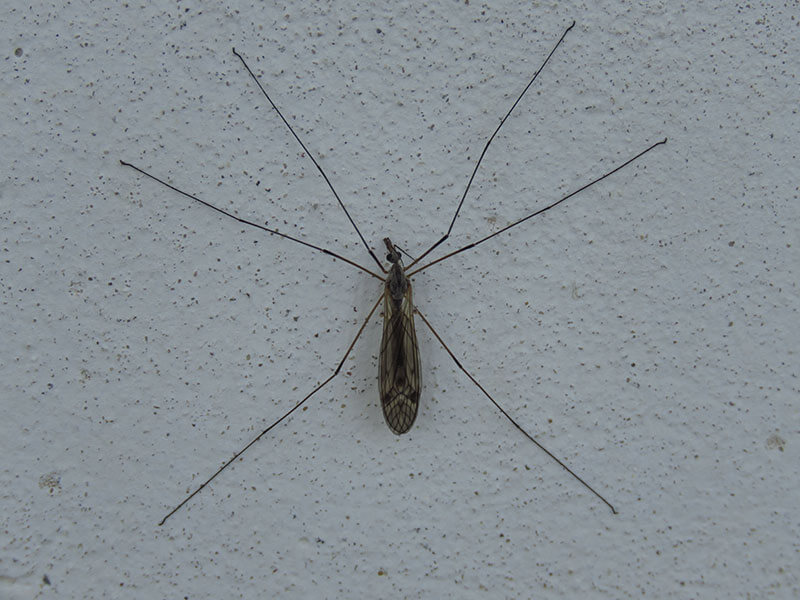
The adult crane fly looks like a large mosquito with long legs and disproportionate wings. It does not sting and does not cause damage to the lawn. It is the larva, a plump cutworm that can be 3 to 4 cm long, that causes the damage. Birds, skunks and raccoons love them! The damage will be noticed in the spring. Overwintering leatherjacket larvae come up from the ground to feed. After heavy rains, they can be seen clustered in large numbers on hard surfaces like driveways. Eggs and larvae need water to survive, so proper drainage may help limit the damage. Treatments are effective.
Other insects can also cause varying degrees of damage to your lawn. If you see damage to your lawn such as yellow or brown patches or if nocturnal animals are digging numerous holes in your lawn, you must act immediately. Contact your Nutrite Expert who can help you make the right diagnosis and take the necessary corrective measures to get rid of these pests.

